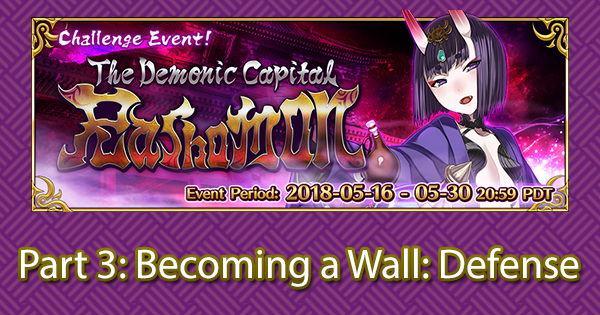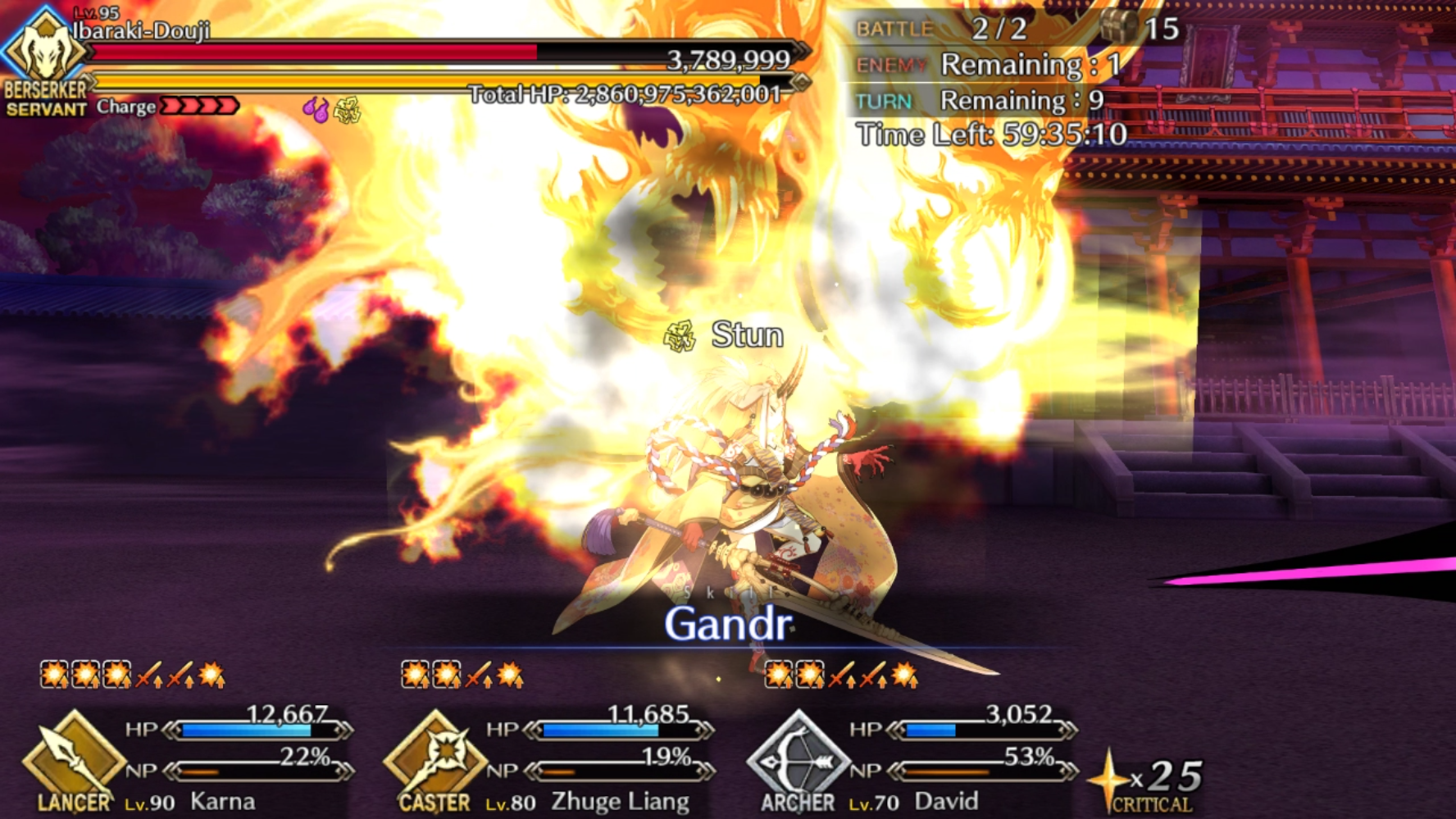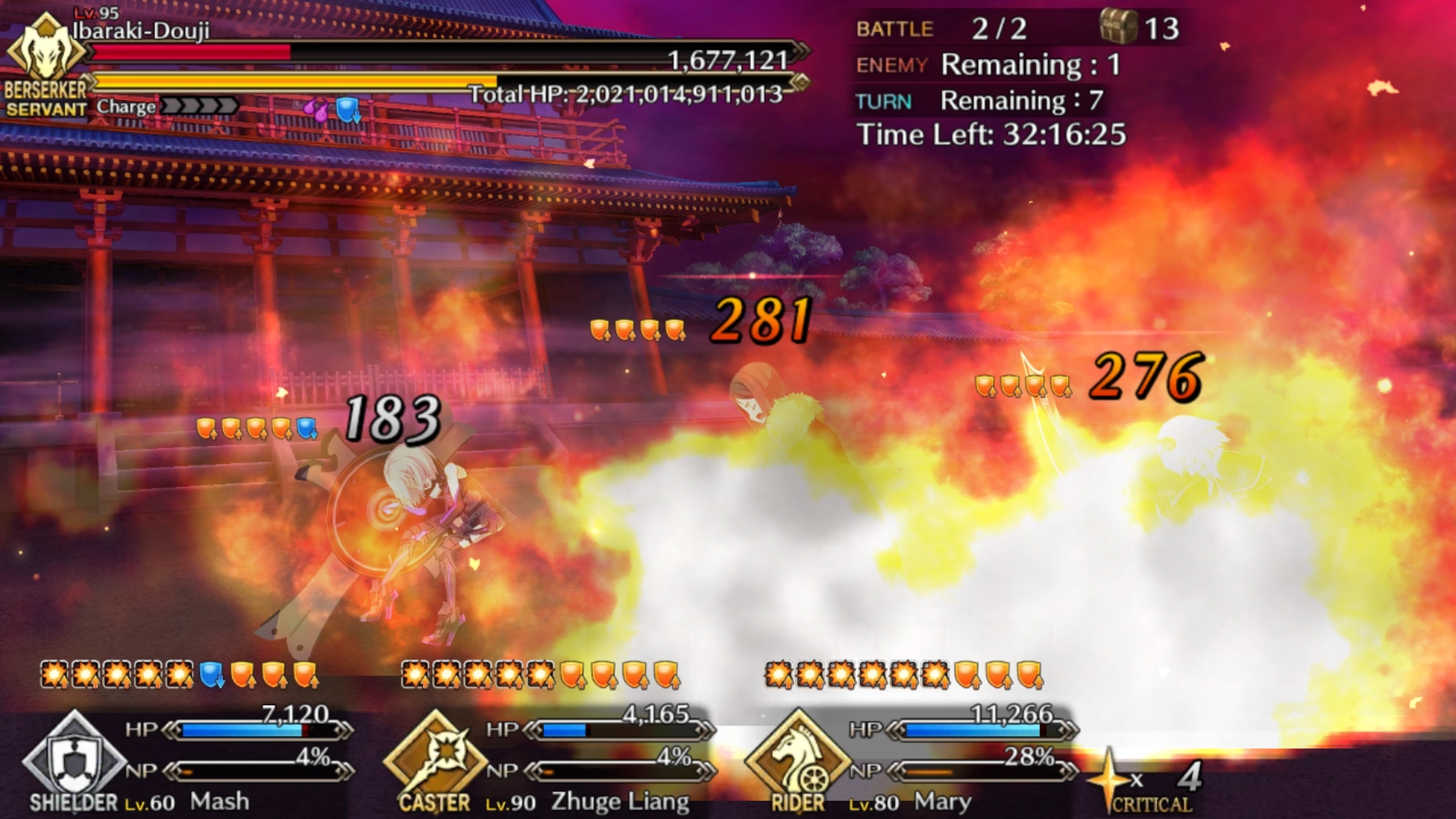
Part 3: Becoming a Wall: Defense
The amount of damage you can receive in challenge quests is no joke. While class advantage may mitigate a lot of the damage taken, it is often not a good idea to form teams solely based on the mechanic. The strongest enemies can bring an unprotected silver Servant to 0 HP in a single turn if the AI is particularly vicious. Besides, Berserker enemies refuse to be shackled by such foolish notions as class disadvantage (at least until the Foreigner class comes into the picture).
Part 3.1: Rotating Defenses
The strongest team compositions tend to be teams where defensive options are always available. There are a variety of tools that can help, whether that is simply healing, buffing the team, debuffing the opponent or deploying Noble Phantasms. Ideally, there is always something going on at every moment in the fight. However, since almost all skills have a cooldown period longer than the effect’s duration - even at max level - coming up with a strategy to bridge the gap between defensive skills is crucial. In other words, there needs to be a rotation of defensive measures.
If the team is undefended even for a moment, the boss may enact a nightmare scenario where a critical hit takes out an essential frontline Servant. Of course, such an event may be slightly exaggerated, but it is typically these tense turns which make or break a run. It is these situations that explain why leveling core defensive skills like David’s Harp of Healing, Mash’s Transient Wall of Snowflakes and Waver’s Tactician’s Advice have higher priority. Not only do higher ranks provide more protection, but skills receive a cooldown reduction at rank 6 and then again at 10. The fewer turns in which a frontline Servant is undefended, the better. Essentially, surviving in a challenge quest is about minimizing moments of vulnerability. Improving the speed of the rotation is simply one of best ways to do so.
Support-type Noble Phantasms can be utilized to bridge the gap between skill cooldowns, as they technically have no cooldown limitations. For example, Hans’s Marches Meines Lebens is very spammable and even Mash can charge her Noble Phantasm quickly with her taunt skill. Another way to bridge the gap between the team’s defensive skills is to save taunts and damage prevention skills for these moments of vulnerability. Mystic Codes can come into play here as well, as a well-timed stun can prevent a full party wipe. Sadly, these Mystic Codes often come with very large cooldowns, but more often than not, the fight ends before this becomes a problem.

Part 3.2: Survival Skills
In order to understand which Servants and skills work best at keeping a team alive, it is time to have a look at the specific strengths and weaknesses of each effect that prevents, reduces or recuperates damage taken. Which defensive measure works best and where is extremely dependent on what boss is in the challenge quest.
 |
|
|---|---|
 |
|
 |
|
 |
|
 |
|
 |
|
 |
|
 |
|
 |
|
 |
|
Part 3.3: Proper Defense

What types of defensive measures are best is very reliant on what boss a node contains. Bosses that spam their Noble Phantasm are better countered by stalling them with stuns, draining their charge gauge or preventing their damage with an immunity. Meanwhile bosses that rely on their normal attacks to wipe out a team will need to be countered with a mix of defense up and healing. By answering the questions raised in part 1, it becomes possible to assess what poses the biggest threat in the challenge quest.
Start building a team by keeping in mind which particular mechanic you want to counter most of all. For example, if faced with a boss that on each Noble Phantasm applies Invulnerability Pierce and stalling is not an option, start building a team based on Defense Up. Select someone like Mash that can provide these defense up buffs and then complement this Servant by either adding even more defense up or some ways of recuperating from damage. Alternatively, invest in a Servant that can provide the offense that Mash can’t, like Hans or a hybrid like Nero Bride.
For challenge quests that concern Berserkers or a class disadvantage in particular, defense buffs will often have the most impact. Berserkers do so much damage that the percentage of damage reduction from defense buffs will keep Servants alive for longer than simply healing them would. The damage reduction gained from defense buffs lasting for three turns far outweighs any but the strongest of healing.
Furthermore, a massive benefit of defense up is that it works as a way to reduce the chance of getting one-shotted as it narrows the possible damage range of the enemy. A healing skill or Noble Phantasm can only be triggered after the damage has been dealt. However, if a Berserker crits or focuses fire on a specific Servant, there may be no time to react as the Servant would have already perished. Defense up, on the other hand, is proactive. The damage taken is reduced no matter what the enemy does and even if a Berserker crits or focuses damage unto one Servant, there is a good chance of survival until the next turn. At that point, there is at least the opportunity to respond to the new situation.
Part 3.4: In Conclusion
In order to keep the team alive, consider the following:
- The high amount of damage taken during challenge quests necessitates some defensive skills.
- Ensure the team is always protected by setting up a rotation of defensive measures.
- Moments in which the defenses are down is when the frontline is vulnerable to freak deaths.
- Through levelling defensive skills, moments of vulnerability can be shortened.
- Personal skills that prevent damage taken or skills that disable enemy actions help bridge moments of vulnerability.
- Noble Phantasms that protect the team can similarly bridge the gap between skill cooldowns.
- After assessing the boss (see part I), pick a defensive measure that best counters the enemy and choose a support that provides it.















